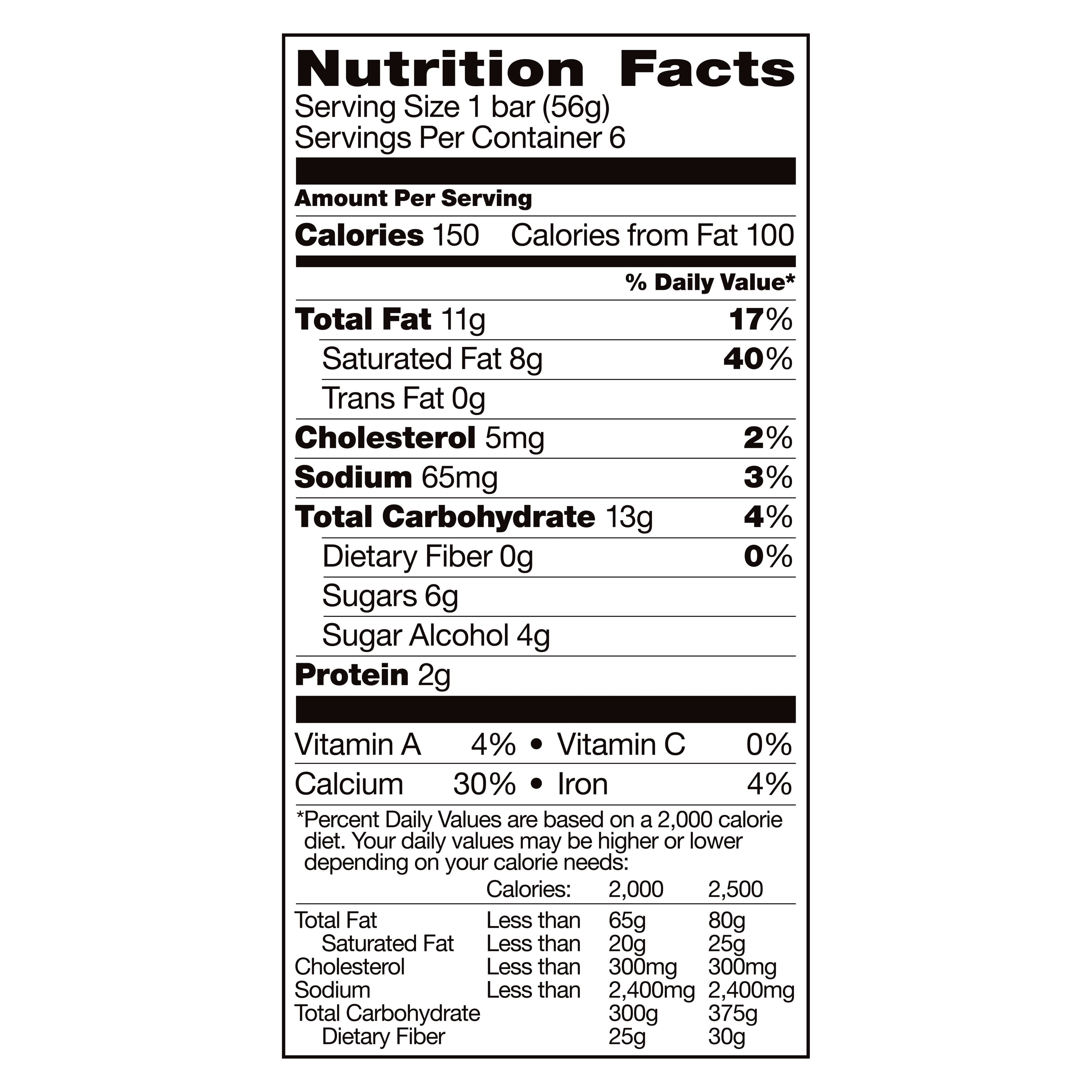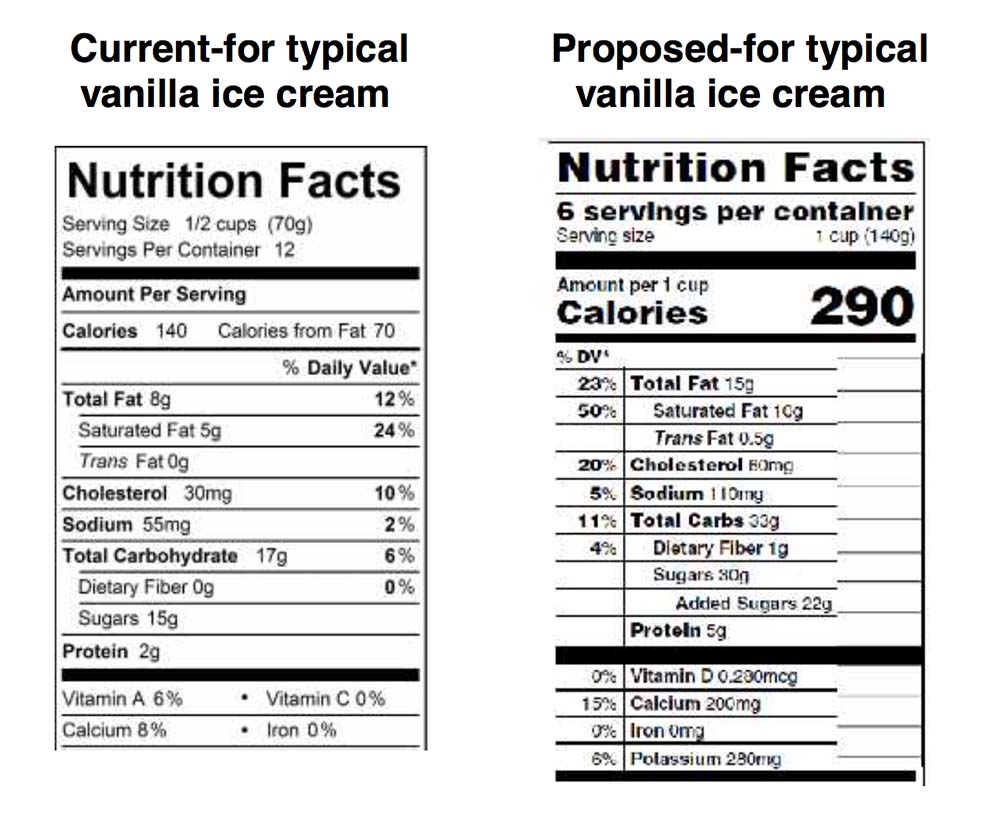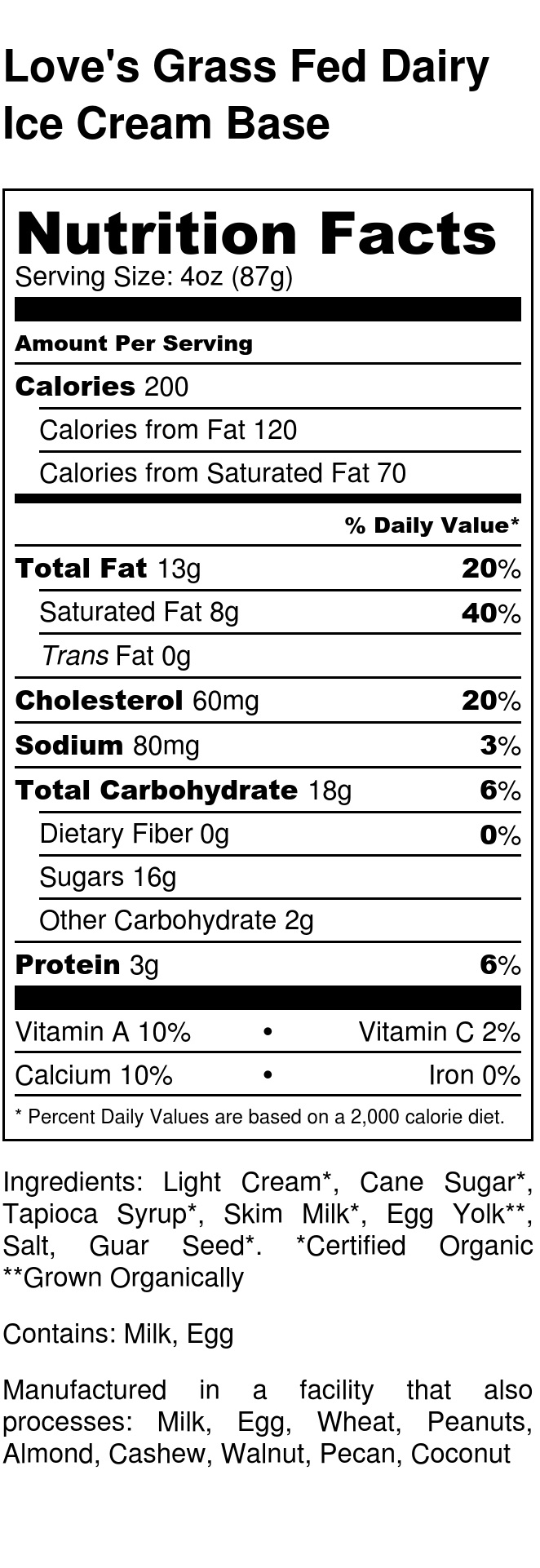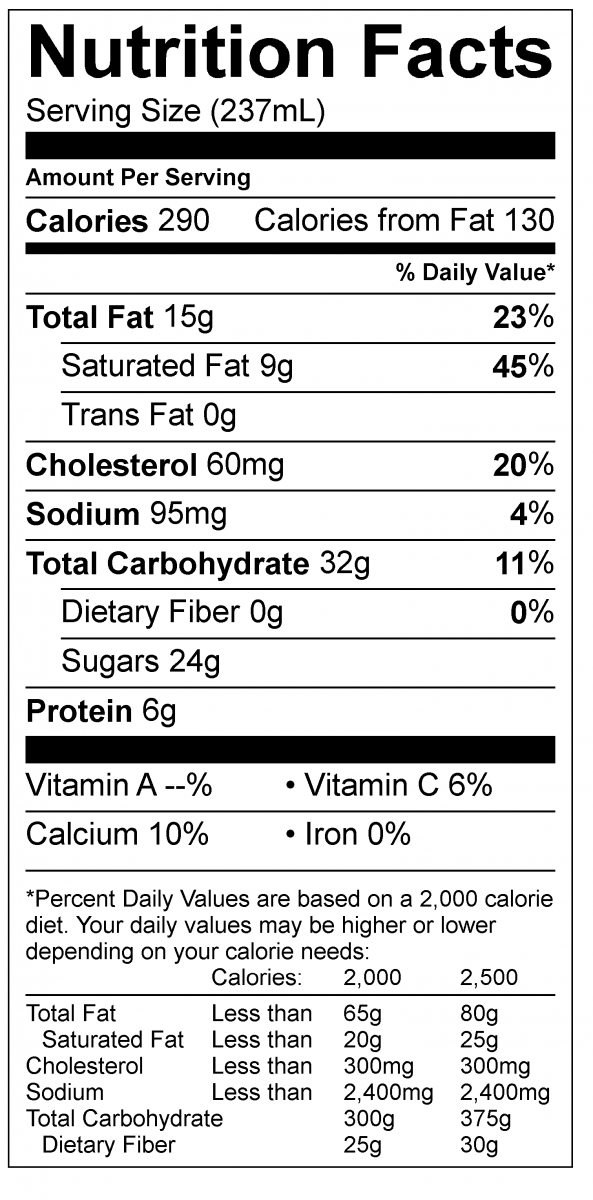Table of Contents
- What is a Nutrition Facts Label?
- Serving Size
- Calories
- Total Fat
- Sugar Content
- Protein
- Vitamins and Minerals
1. What is a Nutrition Facts Label?
A Nutrition Facts Label is a food labeling required by the U.S. Food and Drug Administration (FDA). It provides detailed information about the nutrient content of a particular food, allowing consumers to make informed decisions about their dietary choices.
2. Serving Size
The serving size on the nutrition label indicates the amount of ice cream considered a single serving. Pay attention to this portion size as it impacts the values listed for calories and nutrients.
Serving Size
The serving size listed on the ice cream nutrition facts label refers to the recommended portion of ice cream to consume at one time. It is important to pay attention to this serving size when assessing the nutritional content of ice cream.
Typically, the serving size for ice cream is listed in grams or milliliters. It is essential to be mindful of this measurement to accurately understand the nutrient values and calories provided in each serving.
The serving size serves as a reference point for assessing the calories, fats, sugars, proteins, and other nutrients listed on the nutrition facts label. These values are based on consuming one serving of the ice cream product.
It is essential to be aware that exceeding the recommended serving size may result in consuming additional calories, sugars, and fats than what is indicated on the label. Therefore, it is advisable to stick to the suggested serving size to maintain a balanced and healthy diet.

3. Calories
The calories listed on the nutrition facts label represent the amount of energy provided by consuming a serving of ice cream. Be aware of your calorie intake and choose ice cream options that align with your dietary goals.
4. Total Fat
The total fat content shows the grams of fat present in a serving of ice cream. This includes both saturated and unsaturated fats. It's important to monitor fat intake as excessive consumption can lead to various health issues.
5. Sugar Content
The sugar content displayed on the nutrition label indicates the amount of added sugars and natural sugars present in a serving of ice cream. Keep in mind that high sugar consumption can contribute to weight gain and other health concerns.
Ice cream is a popular frozen dessert loved by many. It provides a sweet and refreshing treat, but it is essential to be aware of its sugar content for better dietary choices. The nutrition facts label on ice cream packaging provides information about the sugar content.
The sugar content is usually mentioned under the "Total Carbohydrates" section on the label. It represents the total amount of sugars present in a serving size of ice cream. The measurement is given in grams (g).
It's important to note that ice cream contains both naturally occurring sugars, such as lactose from milk, and added sugars. Added sugars are the ones to keep an eye on as they contribute to extra calories without any additional nutritional benefits.
Monitoring the sugar content in ice cream can be beneficial for individuals who are managing their sugar intake or following a specific diet plan. High sugar intake can lead to health issues like weight gain, diabetes, and dental problems.
Therefore, while enjoying your favorite ice cream, it's essential to be mindful of the sugar content mentioned on the nutrition facts label. Opting for ice cream with lower sugar content or choosing smaller portion sizes can help in maintaining a balanced and healthy diet.

6. Protein
The protein value signifies the grams of protein available in a serving of ice cream. Protein is essential for building and repairing tissues, and it plays a vital role in various bodily functions.
| Amount per serving | |
|---|---|
| Protein: | 6g |
Ice cream contains 6 grams of protein per serving.

7. Vitamins and Minerals
Vitamins and minerals listed on the nutrition label highlight the specific nutrients found in ice cream. These include calcium, vitamin D, vitamin A, and others. They are important for overall health and wellbeing.
Nutritional Information
| Nutrient | Amount per serving | % Daily Value* |
|---|---|---|
| Calcium | 120mg | 10% |
| Iron | 0.4mg | 2% |
| Vitamin A | 120 IU | 4% |
| Vitamin C | 0mg | 0% |
| Vitamin D | 0.9 IU | 2% |
*Percent Daily Values are based on a 2,000 calorie diet. Your daily values may be higher or lower depending on your calorie needs.
Ice cream contains essential vitamins and minerals, although in varying quantities. It can provide a small portion of the recommended daily intake for certain nutrients.
Calcium is present in ice cream, which helps in maintaining strong bones and teeth. One serving of ice cream provides approximately 10% of the recommended daily intake of calcium.
Iron, though in small amounts, is also found in ice cream. Iron is essential for oxygen transportation in the body and contributes to overall well-being. One serving of ice cream contains around 2% of the recommended daily intake of iron.
Vitamins A and D are also present in ice cream, but in relatively low amounts. Vitamin A supports eye health and normal functioning of the immune system, while vitamin D aids in calcium absorption and contributes to bone health. Ice cream can contribute approximately 4% and 2% of the recommended daily intake of vitamins A and D, respectively.
It is important to note that ice cream should be consumed in moderation as part of a balanced diet. While it may contain some vitamins and minerals, it is also high in sugar and fat content, so it is best to enjoy it as an occasional treat rather than a dietary staple.

Key Takeaways
- Pay attention to serving size and adjust portions accordingly.
- Be mindful of the calories consumed from ice cream.
- Monitor the total fat and sugar content to make healthier choices.
- Consider the protein value in ice cream to support your dietary needs.
- Take note of the vitamins and minerals ice cream provides.
Frequently Asked Questions (FAQ)
Q: Can I eat ice cream as part of a healthy diet?
A: While ice cream can be enjoyed in moderation, it is important to consider its high calorie and sugar content. Look for healthier alternatives or enjoy small portions as an occasional treat.
Q: Is there a significant difference in nutrition between various ice cream flavors?
A: Yes, the nutrition facts of ice cream flavors can differ based on ingredients. Check the label for specific details, as flavors like chocolate and fruit-based options may have variations in calories, fat, and sugar.
Q: Can ice cream be a good source of calcium?
A: Yes, ice cream typically contains calcium, which is essential for maintaining healthy bones and teeth. However, consider other calcium-rich foods to ensure you meet your daily requirements.



Recent Comments